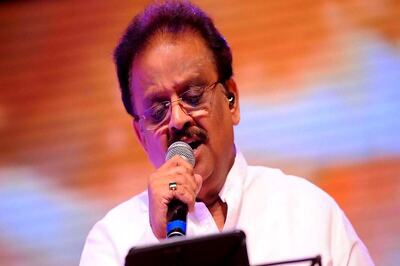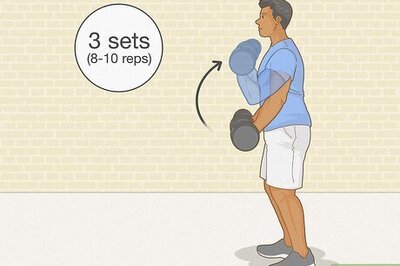
views
Bhubaneswar: An ongoing demolition drive around the 12th-century temple of Lord Jagannath in Odisha’s Puri has left heritage conservationists, historians and many others upset. The encroachment drive is aimed at making the streets wider and to enhance the security arrangements for the temple.
While two centuries-old Vaishnavite monasteries having integral ties with the world-famous temple were razed to the ground over the past five days, several other ancient buildings belonging to such religious institutions are set to come under the bulldozers in the next few days.
Four days after Odisha Chief Minister Naveen Patnaik announced Rs 500-crore mega plan to turn the holy seaside town of Puri into a World Heritage City, the district administration started the demolition drive. “The security of Srimandir and the Mahaprabhu (Lord Jagannath) is the sacred duty of the Odia race,” said Patnaik in his appeal to the residents of Puri on Janmashtami day, citing terrorist threat to the temple as one of the reasons behind the demolitions.
The 300-year-old Languli Matha, also called Nanguli Matha, was pulled down on August 27 in presence of 20 platoons of police force along with Rapid Action Force (RAF). Demolition of the 700-year-old Emar Matha, which faced the Jagannath temple across the street, began on August 29 after idols and books in a 100-year-old library on its premises were shifted.
Emar Matha, a major Vaishnavite monastery, was set up by the followers of the 12th-century theologian Ramanuja, from Tamil Nadu. Discovery of several underground rooms at the site created a sensation, but experts said all such matha buildings had these structures to store grains. In 2011, the matha had hit the headlines after 522 silver slabs weighing 18 tonnes and valued at about Rs 90 crore were discovered from wooden containers closed by brick walls in it.
While the residents of Puri town have been voicing their protests sotto voce, scholars and activists have started speaking up now over the plans to revamp the town. They have demanded an immediate halt to the demolitions, calling it a “monumental damage” to Odisha’s heritage and Sri Jagannath culture of Puri.
“The government says the demolitions are being carried out to convert Puri into a World Heritage City. But is it done by demolishing the heritage itself? Temples and mathas have been integrally linked for centuries. Razing the mathas is simply obliterating important institutions that have built up the syncretic Jagannath culture as we know today,” said Dr Prafulla Rath, an eminent researcher of Jagannath culture and history.
Anil Dhir, heritage conservationist and project coordinator of the Odisha chapter of Indian National Trust for Art and Cultural Heritage (INTACH), called the ongoing demolition drive a “colossal damage akin to the vandalism of the Talibans”.
“While it was alright to clear the unauthorised constructions that came up around the temple in the past few decades, pulling down the historic mathas is simply uncalled for. No consultations were ever held with the residents and intelligentsia of Puri town, Odisha’s cultural experts, historians and archaeologists about the makeover plans,” said Dhir.
Surendra Mishra, another researcher of Jagannath culture, said the government should not destroy living heritage integrally linked to the temple in the name of creating wider streets and ensuring the temple’s security.
“Temples and mathas are like two sides of a coin. You damage one, and the other gets damaged. These mathas embody the spiritual traditions and different philosophical currents that together make up Hinduism. Demolishing them is sacrilege,” said Dr Ramacharan Dash, head of a matha in Puri. “Temples are for the Gods and the mathas are for people who help protect and promote religion. Guru and Govind are taken care of by mathas and temples respectively,” he added.
Priyadarshan Patnaik, the convener of Jagannath Sena, said the report of JP Das Commission, which is being cited as the basis for the demolitions in Puri, does not mention “75 metres from the temple’s boundary wall” as the areas that need to be cleared.
“The Odias are proud of their heritage. It is wrong for the government to demolish buildings signifying historical and cultural heritage like Kalapahada did,” said Patnaik.
While protests by Odisha’s intellectuals are slowly gathering momentum, the state government has stayed quiet on the issue. Even the Shankaracharya of Govardhan Peeth at Puri, Swami Shri Nischalananda Saraswati, and the titular king of Puri, Gajapati Dibyasingha Deb, are yet to speak up, which many find baffling.
(With inputs from Akshay Mishra and Sumanta Sundaray)



















Comments
0 comment